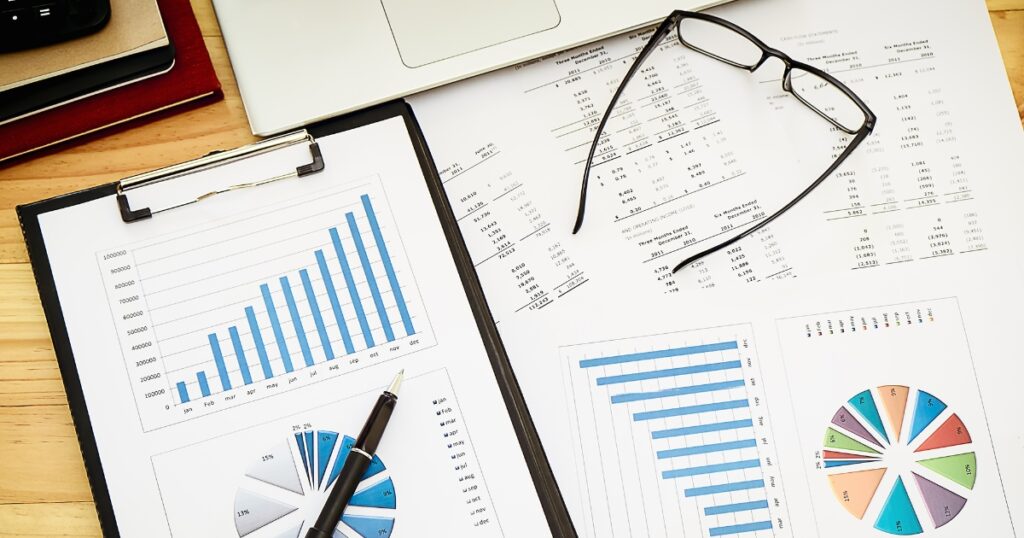Economic update August 2025

Global
Financial markets rallied in July after the US struck trade deals with Japan and the EU, which involved a reduction in the tariff rate in exchange for over $1 trillion in combined investment and purchased commitments, supporting both equities and broader risk sentiment.
While gold has been supported year to date (YTD) by safe-haven demand and exchange traded fund (ETF) inflows, momentum softened after the trade deal announcements and prices accordingly consolidated into month end. Gold spot finished July 40 basis points (bps) lower than it started.
COMEX futures and London Metal Exchange (LME) benchmarks rallied at the beginning of July after US President Trump flagged the possibility of a 50% tariff on copper imports. However, later in the month, the price action reversed sharply after the administration clarified that the tariff would only apply to semi finished copper and derivative products (not refined metal).
Global equities performed well in July, with the Morgan Stanley Capital International (MSCI) World Index closing at a record high and up +1.2% on the month. The S&P500 and Nasdaq also created several fresh highs, boosted by solid earnings releases and easing tariff concerns.
The global manufacturing Purchasing Managers’ Index (PMI) increased to 50.3 in June and global services PMI declined slightly to 51.9.
US
US Federal Reserve (The Fed) kept interest rates unchanged. Fed Chair, Jerome Powell did not give any signal regarding next steps for policy rates, consistent with previous guidance from the committee to watch data “over the summer”.
At the beginning of the month, the US Senate passed Trump’s “Big Beautiful Bill” after a 27-hour session. With the Senate tied 50-50, Vice President JD Vance cast the tie breaking vote and took the final count to 51-50. President Trump signed the Bill into law during the White House’s Fourth of July ceremony.
The Nasdaq and S&P500 closed at record highs multiple times throughout the month. Nvidia boosted the index and became the first public company to reach US $4tn market cap. On the last trading day of the month, Microsoft briefly surpassed the US $4tn market cap threshold, becoming the second publicly traded company to ever do so. The S&P500 and Nasdaq closed July up +2.2% and +3.7% respectively.
Q2 GDP rebounded to +3.0% quarter on quarter seasonally adjusted annual rate (SAAR). The statistic was boosted by net exports, with underlying growth slowing.
Core Consumer Price Index (CPI) printed at +0.23% month on month (MOM), slightly softer than consensus expectations of +0.3%.
Core Personal Consumption Expenditures (PCE) matched expectations, printing at +0.26% MOM, with the year on year (YOY) reading stronger than expected due to upward revisions of the May and April numbers.
The unemployment rate fell unexpectedly to 4.11% in June, with the US economy adding 147k jobs. Industrial production increased +0.3% MOM in June, while manufacturing production increased by +0.1%.
Australia
The Reserve Bank of Australia (RBA) elected to keep rates on hold during its July meeting in a 6-3 vote. This surprised the market, which had almost fully priced in a 25bp cut. The majority of Board members decided to wait until the Q2 CPI data was published before voting in favour of an additional rate reduction.
The ASX200 advanced +2.4% in July and notably surpassed 8,700 for the first time in its history on Friday 18 July.
The unemployment rate in June ticked up to 4.3%. The economy added over 2,000 jobs, below consensus estimates of adding 20k jobs.
Q2 CPI printed slightly softer than expected, with headline CPI increasing by +0.71% in Q2, below consensus +0.8%. Consequently, yearly headline CPI eased from +2.4% to +2.1%. Trimmed mean CPI increased by +0.59%, below +0.7% expectations. This confirmed market expectations for a 25bp rate cut in August. This policy rate change is nearly fully priced in by fixed income markets.
May and June retail sales were released during July. May sales came in at +0.2%, weaker than the +0.5% consensus pencilled in and April’s -0.1% figure was revised to flat. On the other hand, June retail sales were stronger than expected, increasing by +1.2% (vs consensus expectations for a +0.4% rise). Notably, this was the last retail sales print, with the Australia Bureau of Statistics (ABS) moving to a broader household spending indicator.
New Zealand
The Reserve Bank of New Zealand (RBNZ) opted to leave interest rates unchanged at 3.25% when it met in July, with the expectation that annual CPI would likely increase towards the top of the Monetary Policy Committee’s 1-3% target band over mid 2025.
Later in the month, Q2 CPI printed softer than expected, increasing by +0.5%, vs consensus expectations of +0.6%. The headline miss was largely due to lower than expected home ownership costs and health.
Europe
US President Trump proposed a 30% tariff on all goods from the European Union if a separate trade deal could not be negotiated before August 1. Later in the month, an agreement was reached which imposed a 15% tariff on European exports to the US.
The European Central Bank (ECB) kept interest rates unchanged in July as expected.
The Eurozone unemployment rate inched up to 6.3% in May, from 6.2% in April.
The STOXX600 gained +0.9% during July. The market moved mostly sideways during the month as investors awaited further clarity on the tariff situation.
Eurozone Harmonised Index of Consumer Prices (HICP) rose to 2.0% in June, slightly higher than the 1.9% May print.
Euro area industrial production rebounded strongly in May, up +1.7% MOM, vs -2.2% MOM decline in April.
China
China’s economy expanded by +5.2% YOY in Q2, slightly ahead of consensus expectations but exceeding Beijing’s full year target of 5%.
On July 28, China announced that it would be implementing nationwide childcare subsidies to support the birth rate. The program will see families provided with 3,600 yuan per year for each child up until the age of three. The subsidies will have retroactive coverage, applying in full to children born on or after 1 January 2025 and in part to children born before that date.
Export growth came in above expectations in June, increasing +5.8% YOY vs +5.0% YOY consensus. The manufacturing PMI declined to 49.3, from 49.4 in June. Non manufacturing PMI softened from 50.5 in June to 50.1 in July, slightly below market expectations of 50.2.
Australian dollar
The AUD saw a fairly choppy month in July, though ended the month -2.4% lower. The local currency traded as high as 0.6620, though finished the month at its low near 0.6425.
The surprise hold from the RBA to start the month started a bullish week or so stretch for the Aussie, trading close to 0.66.
Despite being slightly soft, the US CPI print mid month showed some tariff impacts, seeing the market dial back Fed cut expectations and the USD modestly rise. This, combined with AU unemployment hitting 4.3%, resulted in weakening of the AUD to ~0.6460.
Tariff deal announcements with both Japan and the European Union during the remainder of July buoyed risk and pushed the AUD to its intramonth high of 0.6602.
The end of the month saw what looked like a squeeze in short USD positions, bringing the Aussie lower once again, in conjunction with some hawkish rhetoric from Jerome Powell.
Australian equities
The ASX200 reset its record high during July finishing the month +2.4% higher than it began. Most sectors in the index saw gains, with the Financials complex the only sector to fall (-1.0%).
The major banks were mixed in July, with CBA seeing the largest decline (-3.7%). NAB and WBC also saw declines, down -1.1% and -0.1% respectively. Meanwhile ANZ bucked the trend, rising +5.4%.
AMP saw the largest percentage increase of the Financials sector, up +27.0% with net flows up +63% on the prior quarter.
The Health Care sector saw the largest percentage gain on the index, up +9.1% during July. This was supported by index heavyweight CSL, which advanced +13.1%. Clarity Pharmaceuticals saw the largest gain of the complex, advancing +74.8% following multiple announcements including the successful completion of a $203m placement and positive progression in several clinical trials.
A rotation out of banks and into resources was seen in the back half of the month, with the resources sector up +4.1% in July. Rare Earth miners ILU and LYC saw some of the largest percentage gains, up +35.5% and +21.6% respectively.
Updates within the resources sector were mixed. Boss Energy sold off -44% on the day it reported its June quarter (JunQ) results. Despite the outlook, the company beat consensus expectations for JunQ production. The stock saw the largest percentage decline on the index, down 62.7%. On the other hand, FMG gained +16.3% during July after posting strong JunQ results.
Gold stocks were mixed, with NEM gaining +10.8% after reporting a strong quarter and record free cash flow, while NST saw the largest percentage decline in the sector, down -16.1% after lifting its capital expenditure (capex) forecast.
JLG entered into a Scheme Implementation Deed with private equity company Pacific Equity Partners at $4.00 per share, in a $1.1bn deal. JLG closed the month +23.0% higher.
Global equities
Notwithstanding some earnings and macro induced volatility over the course of the month, global equities broadly trended higher in July.
The MSCI World Index advanced +1.2% in July. The S&P500 and Nasdaq indices ended up +2.2% and +3.7% respectively. Both the STOXX600 and MSCI Asia Pacific indices closed +0.9% .
In the US, NVDA became the first publicly traded company to exceed US $4tn market cap, while Microsoft briefly reached this level at the end of the month.
Tech stocks led the S&P500 higher, with the sector gauge advancing +5.2%. Four of the Magnificent 7 Stocks (Mag7) stocks reported strong quarters during July, with Alphabet (+8.9%), Microsoft (+7.3%) and Meta (+4.5%). Tesla shares fell over 8% after reporting lower profits and CEO, Elon Musk warned investors the company could be facing more “rough” quarters ahead. The stock ended down -3.0%. Of the remaining Mag7: AAPL +1.2%, AMZN +6.1%, NVDA +12.6%.
European equities moved sideways during July as investors awaited news of a trade deal with the US, which came towards the end of the month. Stoxx sectors saw mixed performance, with Banks up +7.2%, while Media companies underperformed, down -6.5%.
Novo Nordisk saw the largest percentage decline on the index, down -28.5% after the company issued a profit warning, cut its growth outlook for 2025 and named a new CEO. Elsewhere, TSMC gained +6.7% after reporting a strong quarterly result and lifting its 2025 USD revenue guidance to 30% YOY with unchanged capital expenditure expectations.
Property securities
Global property securities saw slowness in July (-1%) after three consecutive months of positive returns (June 1.3%, May ~1% and April 0.9%). Global property continues to be up ~6% YTD.
Regional differences remain with the Americas region seeing continued weak performance down -0.8% in July, marketing four consecutive months of negative performance (June -0.5%, May -4.6% and April -2.2%), likely on concerns about the higher US debt on longer term interest rates.
Europe/UK had a weak month (-6.0%) after strong returns (~20%) over April-June.
The Asia Pacific region had a positive July (+0.9%), continuing from June (+4%), May (+1.0%), and April (+4.5%). Lower rates and limited growth expectations from tariffs were key contributors.
Locally, Australian Real Estate Investment Trusts (AREITs) had a more positive month (+3.3%) marking four consecutive months of positive returns – June +0.7%, May +5% and April +6%, with positive macro data highlighting the scope for lower rates and an improving backdrop for REITs.
Fixed Income and Credit
The first half of the month saw steepening pressure in global long end bonds. Fiscal deficit fears were brought centre stage following the signing of Trump’s Opportunity and Balanced Budget Bill (OBBB) into law and the Japan LDP election loss in the lower house.
The 10y US Treasury (UST) yield ended the month 15bps higher at 4.376%, while the 2y UST yield ended July 24bps higher at 3.958%. The 30yr UST yield briefly broke through the 5% level during the month, before moderating and closing 13bps higher at 4.901%.
The RBA kept rates on hold in July, contrary to market expectations for a 25bps cut. Fixed income markets had almost fully priced in this policy rate change prior to the meeting. As at month end, the rates market has priced in 80bps of RBA cuts in 2025.
Meanwhile, the US market is pricing in 67bps of cuts in 2025, after the Fed kept rates unchanged at the end of the month. US investment grade credit spreads ended the month flat, after trading sideways during July. The high yield credit spread ended the month +5bps wider.
Source: First Sentier Investors, August 2025



